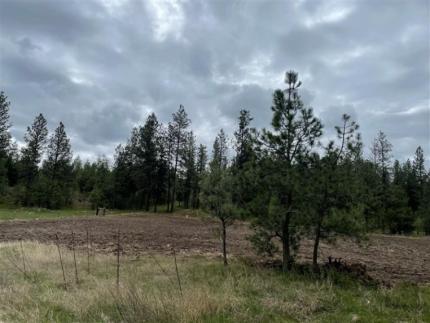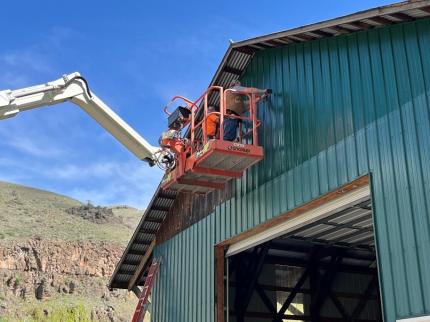Managing Wildlife Populations
Prairie Grouse: Biologist Lowe was in British Columbia trapping sharp-tailed grouse that were subsequently transported and released in either Lincoln or Douglas county as part of a translocation effort to augment existing local populations.
Biologist Brinkman assisted Swanson Lakes Wildlife Area Manager Finch setting up release boxes for sharp-tailed grouse on an existing lek in Lincoln County. Translocated birds get placed into the release boxes for 15 to 20 minutes to settle before being released into their new home.



Prairie Grouse: Biologist Lowe was in 70 Mile House, British Columbia trapping the remaining four sharp-tailed grouse needed to complete the translocation effort for this year. The remaining four grouse were released in Lincoln County on the Swanson Lakes Wildlife Area at an existing lek. In total, 60 birds (30 males and 30 females) were captured, transported, and released over six days during this year’s translocation. On the final day of capture, Photojournalist Joel Sartore from National Geographic met the trapping crew to photograph the birds for his Photo Ark project.



Conserving Natural Landscapes
Prescribed Burn Preparation: Fire Planner Lionberger and Sherman Creek Wildlife Area Assistant Manager Palmer performed fire control line preparation at Rustlers Gulch Wildlife Area. The pair dragged small pasture harrows pulled by an All-Terrain Vehicle (ATV) and a Utility Terrain Vehicle (UTV) to prepare lines for any needed bulldozer use during burning. These lines are essentially fire boundaries.

Columbia Plateau Wildlife Management Association (CPWMA) Work Party: Private Lands Biologist Nizer worked with CPWMA on a hunt by written permission property. They seeded between two and three acres of an unproductive field into alfalfa strips, clover, and barley. Nizer helped seed with the ATV and with clearing out debris and fencing on the property.


Providing Education and Outreach
Dayton Kid’s Fishing Event: Wildlife Area Manager Dingman and Natural Resource Technician Tritt helped with two kids' fishing events in Dayton. Both events were held on the same day, the first event included the kids from The Boys & Girls Club in Dayton and the second event was sponsored by the city of Dayton. There were approximately 100 kids total who attended and fished the Kid’s Pond in Dayton.


Conducting Business Operations and Policy
South Fork Hayshed Repairs: Wildlife area staff members improved the South Fork hayshed by installing metal siding over the gable ends. The metal covers exposed wood and closes holes that were allowing birds to enter the building. A rental snorkel lift made the job much easier and safer. New bat boxes were also installed on each end of the building.


